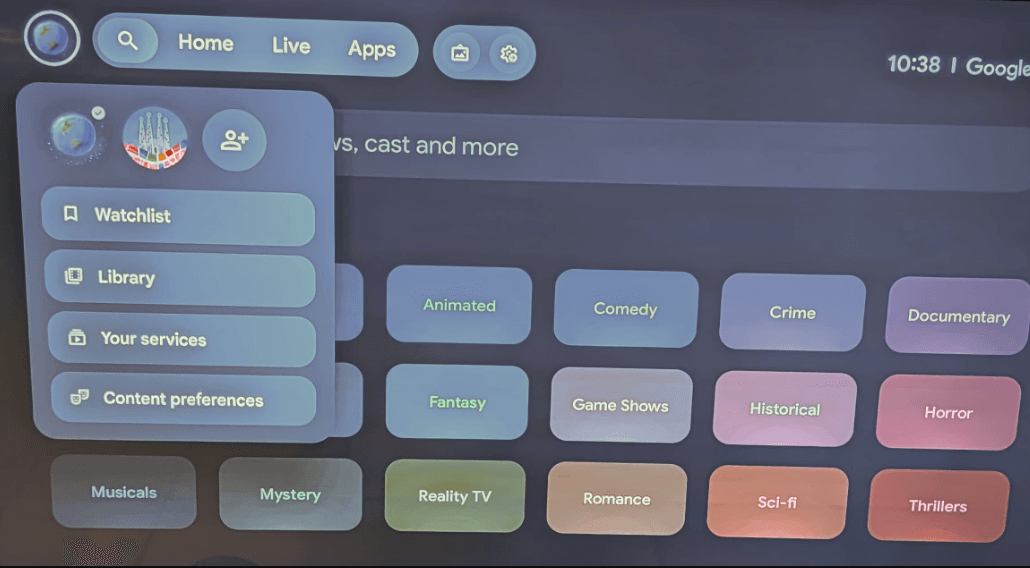
Google TV is rolling out a redesigned user interface that’s reportedly focused on improving the navigation controls and making it more straightforward for users to choose their own screensavers.
A report in 9to5Google says the update has only being rolled out to a relatively small number of U.S.-based users so far, but it’s quite noticeable, with changes to the way the interface looks and feels.
It’s a pretty bold change for Google TV, which has had more or less the same look and feel ever since it launched way back now in 2020, with the only real updates being a few tweaks here and there, such as the rounder buttons that came in February last year.
The latest change is much more significant, with Google shifting the navigation buttons to the top left-hand of the display and reducing the number of tabs. In addition, the “For You” section has been renamed “Home”.
Functionality-wise, there’s a new button for faster access to screensavers, and by clicking on the user’s profile, it’s possible for them to access their personal “Watchlist”, along with a library of any content they have previously purchased. This appears in a dropdown menu.
Moreover, the settings menu that was previously aligned to the right-hand side and took up a fair chunk of the screen estate has now disappeared. It’s not clear from the screenshots provided by 9to5Google where the settings menu has gone.

The redesigned interface may well be an effort by Google to accommodate a number of new capabilities that are said to be coming to Google TV soon. The biggest is the upcoming integration of its AI assistant Gemini, which the company hopes will transform the way people interact with their TVs. The company is also said to be planning to implement a new Ambient Display mode, where the screen transforms into a kind of hub that displays photos, weather and other widgets. The idea is that this will come on the moment you enter the room, with the TV automatically waking up from standby mode.
The update is a relatively simple thing for Google because it does not require any firmware, which would involve updating the underlying Android operating system. Instead, Google can simply refresh the Google TV app that powers the experience automatically, without requiring users to do anything.
However, there is an update to Android TV planned, with Android TV 16 set to be released later this year. As part of that update, Google TV will also begin its transition to 64-bit applications, which should provide better performance.